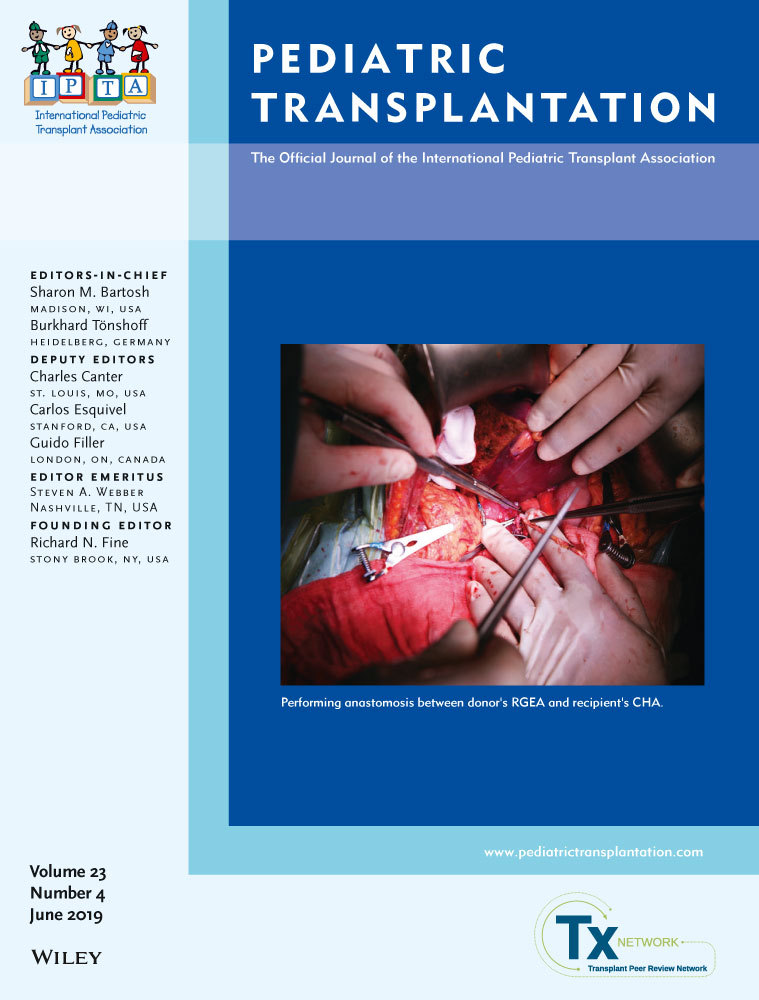Hepatic artery reconstruction with interposition of donor’s right gastroepiploic artery graft in pediatric living donor liver transplantation for metabolic disease
Abstract
Objective
We introduce the indications, technique, results of our experience using donor's RGEA as interposition vessel to solve hepatic artery reconstruction problems in P-LDLT.
Methods
A retrospective analysis of P-LDLT for children with metabolic diseases from June 2013 to November 2018 in our center was carried out. The arterial conditions, reconstruction methods, and prognosis were analyzed.
Results
A total of 73 children with metabolic diseases underwent P-LDLT during the period. The LLF was the main graft, accounting for 71.2%. The donor's RGEA was utilized in five cases. There were three children with OTCD and two children with deficiency of CPS1 and MSUD, respectively. In three cases, the grafts’ left hepatic arteries were anastomosed with the recipients’ PHA using donors’ RGEA as interposition vessel. In other two cases, the donors’ RGEA was interposed between graft's MHA and the recipient's bifurcation of PHA and GDA. The average follow-up time was 19.7 ± 15.9 month. There were two cases of artery thrombosis or occlusion, and the incidence was 2.7%. No arterial complications occurred in children using RGEA (follow-up time 5.0 ± 3.4 months).
Conclusion
In P-LDLT for patients with metabolic diseases, the application of RGEA as an interposition vessel can solve caliber mismatch and short arteries problem and achieve good results. Compared with traditional arterial anastomosis, it may reduce the incidence of arterial complications.




